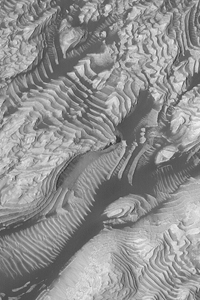
MARS | Science

Full Resolution Version: 291 KB
Order high-quality reprints
An overview of the 1985-2006 Mars Orbiter Camera science investigation
1Michael C. Malin, 1Kenneth S. Edgett, 1Bruce A. Cantor 1Michael A. Caplinger, 2G. Edward Danielson, 1Elsa H. Jensen, 1Michael A. Ravine, 1Jennifer L. Sandoval and 1Kimberley D. Supulver
1Malin Space Science Systems, P.O. Box 910148, San Diego, CA 92191-0148 USA
2Deceased, 10 December 2005
Mars 5, 1-60, 2010 | doi:10.1555/mars.2010.0001
Received August 5, 2009 | Accepted November 15, 2009 | Published January 6, 2010
The Mars Observer Camera (MOC) investigation was proposed in 1985 and selected in 1986 for the Mars Observer mission, a spacecraft that was lost enroute to Mars in 1993. Re-named the Mars Orbiter Camera, MOC was re-flown on Mars Global Surveyor and successfully provided more than 4 Mars years (between September 1997 and October 2006) of daily global meteorological observations and observed ancient, water-lain sedimentary rock, present-day impact cratering, and youthful gullies (some of which may be showing evidence for present-day liquid water), among many other results from its more than 243,000 images.
PDF 13.6 MB | ZIP 58.9 MB | TAR.GZ 58.9 MB | Supporting Files